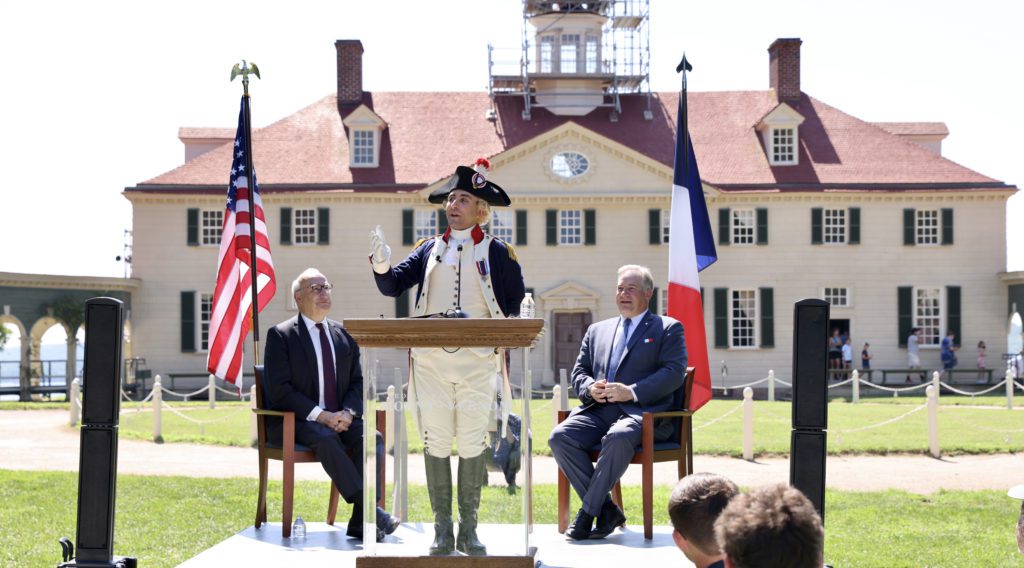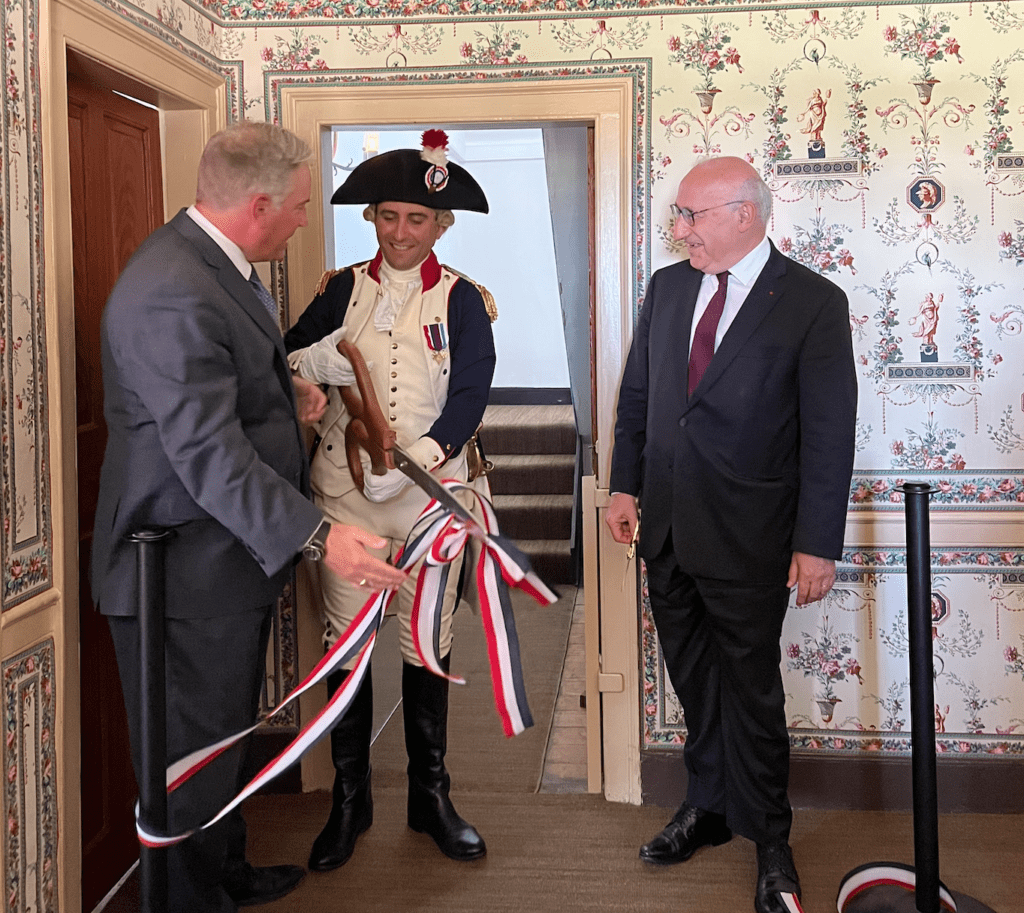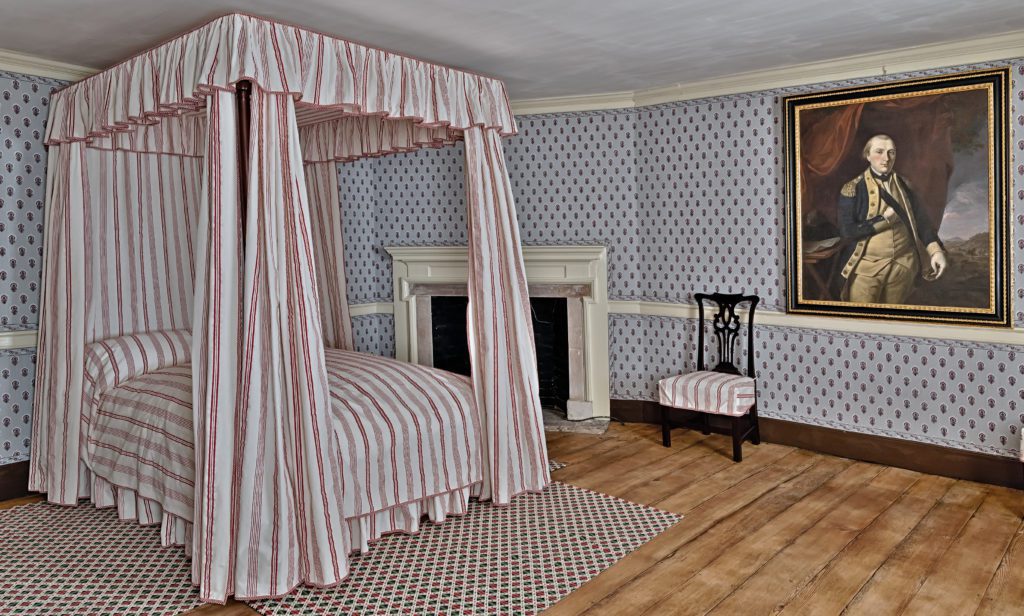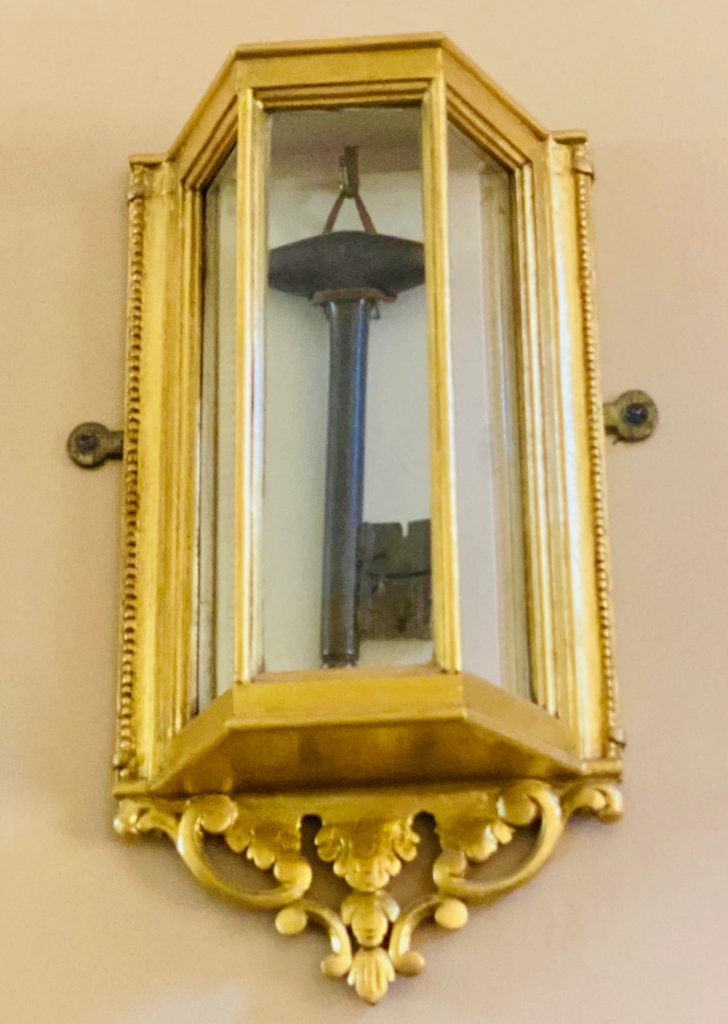Lafayette Comes to Mount Vernon on Bastille Day
By • July 14, 2022 0 2219

“We could not have chosen a better day than this Bastille Day, July 14, to pay tribute to the Marquis de Lafayette and his friendship with the American people,” said French Ambassador to the United States Philippe Etienne, at George Washington’s historic Mt. Vernon home during a ribbon-cutting ceremony to unveil the restored Lafayette bedroom in the historic manor. “This room will remain a shining testimony to everything we owe this champion of freedom, and Bastille Day embodies the values on which our countries are founded.”
Lafayette – whose real name was Marie-Joseph Paul Yves Roch Gilbert du Motier, the Marquis de Lafayette – came to rebelling Colonial America as a volunteer. “I was given [an] honorary generalship due to my royal connections. At my first meeting with George Washington at a tavern in Philadelphia, the General told me: ‘We have much to learn from you I am told.’ But I told him that on the contrary, I was here to learn from him,” recounted well-known Lafayette re-enactor Benjamin Goldman, who presented himself as the young Lafayette in full uniform during the Mt. Vernon event.
Lafayette asked to be on the battlefield and became known as the “Boy General” for his bravery (he was wounded early on) and his loyalty to the American revolution. Washington thanked him for his service and said he would very much like to welcome the General into his “family.” He was referring to his military family, though the young Lafayette interpreted this more intimately. The interpretation of the word foreshadowed what would become a paternal relationship, as Lafayette called Washington his “adopted father.”
Years after the successful end of the American War of Independence in 1783, Lafayette took a victory tour of the United States in 1824 and visited Mt Vernon. The room on the second floor of the Washington manor house on the Potomac River where he stayed became known as Lafayette’s Bed Chamber. In 1795, after being imprisoned in Austria for his part in the French Revolution, Lafayette sent his teenage son and tutor to live under the protectorship of George Washington for over two years and most likely stayed in that room, according to Mt. Vernon officials.
“The re-installation of the Lafayette Room at Mount Vernon is the culmination of an extensive multi-year project of research and cosmetic architectural treatments utilizing extensive documentary evidence, paint analysis, and other information to recover the room’s multilayered history and appearance,” said Mt. Vernon CEO Doug Bradburn. It features a nearly life-size portrait of Lafayette, distinctive wallpaper and as close-as-possible original furnishings.
The most prized legacy of Lafayette at Mt. Vernon remains however the key to the Bastille – a former medieval dungeon and political prison that Lafayette as the General of the French National Guard ordered demolished after its capture from the Ancien Regime by French revolutionary forces in 1789. On Le Quatorze Juillet, or July 14, the Bastille was stormed signifying the start of the French Revolution, an upheaval inspired by the American Revolution. By circuitous routes Lafayette managed to send the main Bastille key to Washington who displayed it in the President’s Office during his second term in office. The treasure then became the prize display at the entrance hall of Mt. Vernon. It has been viewed by millions of visitors from around the world, including many French luminaries and presidents.
“Lafayette was at the core of French independence,” Ambassador Etienne said. “His presence is seen all over Paris, and there will be a large celebration in 2024 at Mount Vernon.”
The ambassador was referring to the 200th anniversary of Lafayette’s Grand Tour of the United States.

The “Marquis de Lafayette” cuts the ribbon for the restored Lafayette Bedchamber, as Mt. Vernon CEO Doug Bradburn and French Ambassador Philippe Etienne look on. Photo by Katherine Schwartz.

The restored Lafayette Bedchamber at Mount Vernon. Courtesy Mt. Vernon.

Marquis de Lafayette’s key to the Bastille hangs at Mt. Vernon. Photo by Peggy Sands.
Georgetowner editorial fellow Katherine Schwartz contributed to this report.

